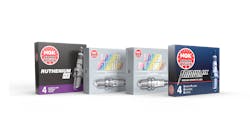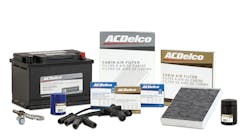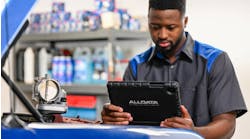WHAT IT IS: Closing ratio is the percentage of items sold on any given visit, regardless of cost, scope or scale.
HOW TO CALCULATE IT: The # of items (repairs) offered ÷ the # of items sold
INDUSTRY AVERAGE: 50-59%
OPTIMAL BENCHMARK: 60%+, although keep in mind the nature of the work being sold. Your shop may aspire to a 95 percent closing ratio, but if the majority of your work is simple maintenance, you probably aren’t presenting terribly complicated nor expensive recommendations to your customers.
If your shop handles more than just routine maintenance, however, it gets a little more complicated. How do you effectively present, educate and sell your customers on the larger repairs? Many experts agree that 75–85 percent or so closing ratio is ideal for many shops due to the hundreds of possibilities they encounter every day.
Shops that reported AROs higher than $400 recorded lower closing ratios (60–69 percent) than those below $400 AROs (70–79 percent).
HOW TO IMPROVE IT: If you’re dissatisfied with what you perceive as a low closing ratio, the first thing to do is establish benchmarks. Will you count oil changes as closing ratio factors? By limiting the scope of your closing ratio repairs, you can more easily establish a baseline and build from there. Here are some strategies to help improve your closing ratio:
- IMPROVE YOUR HOURS PER REPAIR ORDER. More thorough inspections yield more work.
- SET CLOSING RATIO GOALS. As the severity of the repair order goes up, the closing ratio per order should go down. For example, oil changes and air filters could close at 95 percent; wipers at 70 percent; belts at 55 percent. Services and safety issues should vary between 50 percent and 75 percent, say, because they require a little more salesmanship (for a lot more profit).
- BE EXPLICIT ON COSTS. Transparency is key. Don’t beat around the bush on costs or try to hide anything; you’ll lose customers.
- MAKE A SALES GAME PLAN. You don’t need to sell 100 percent of all repairs right away. Safety and reliability of the vehicle are key, so focus on the conversation that has to happen to secure a service or safety sale.
- EVALUATE PERFORMANCE. Work with your staff toward achieving these goals. Some may excel at selling some parts or service and struggle to sell others; work together as a team to help everyone make the most of their repairs.
- TRAIN TO IMPROVE. Training offers endless opportunities for revenue and personal and professional growth. Don’t skip on training just because it means a day out of the shop—find a solution to get everyone what they need.



